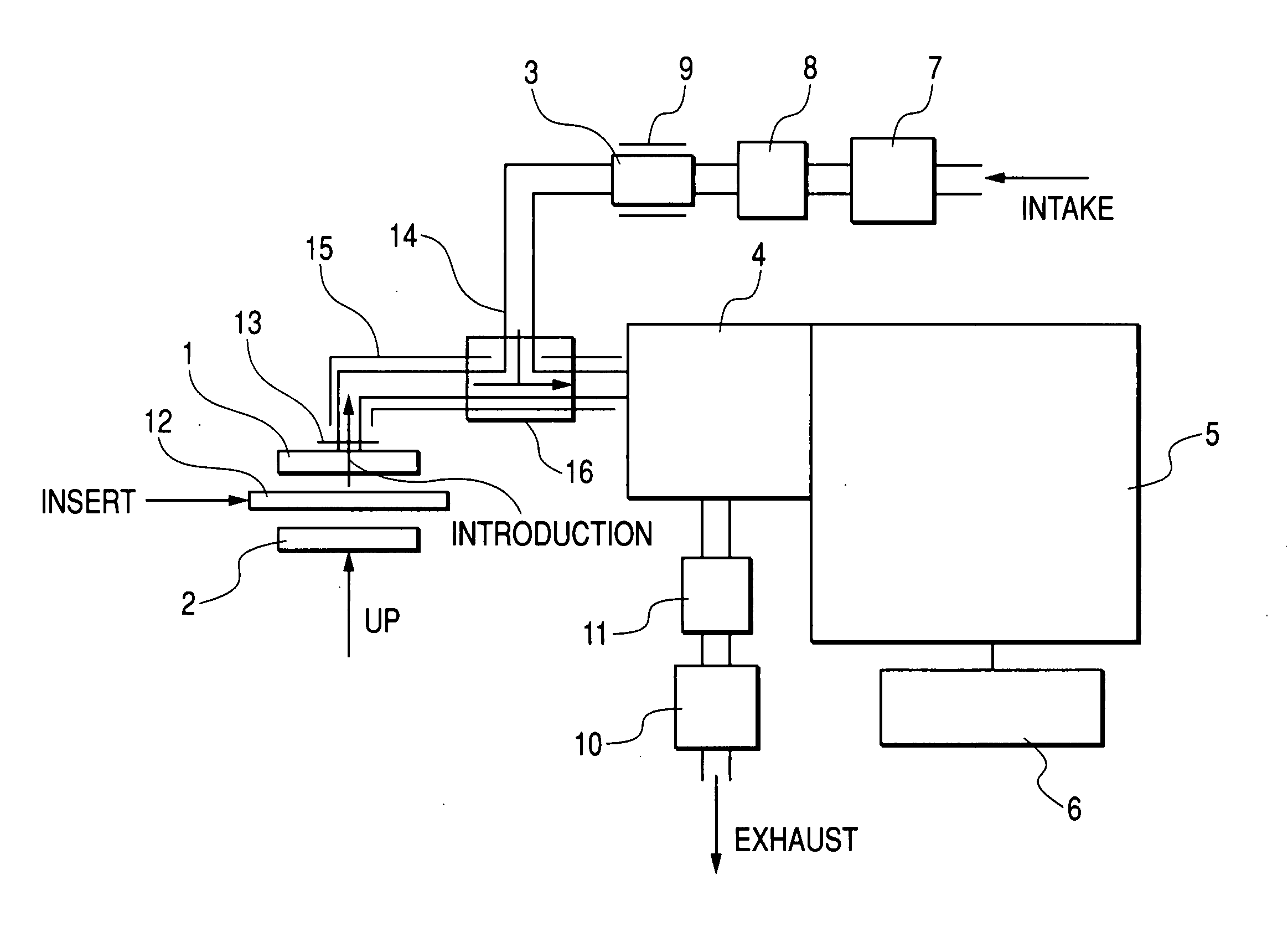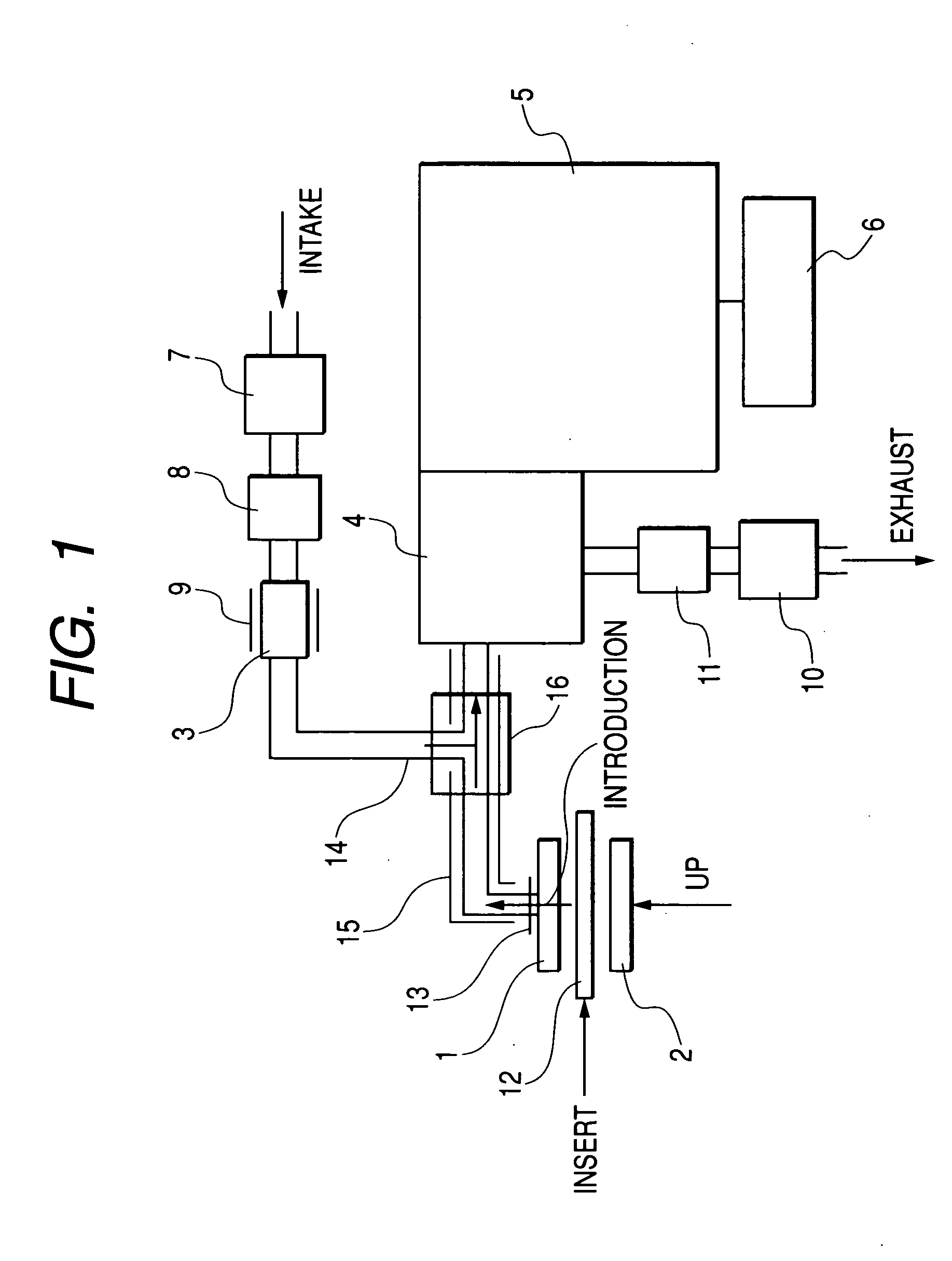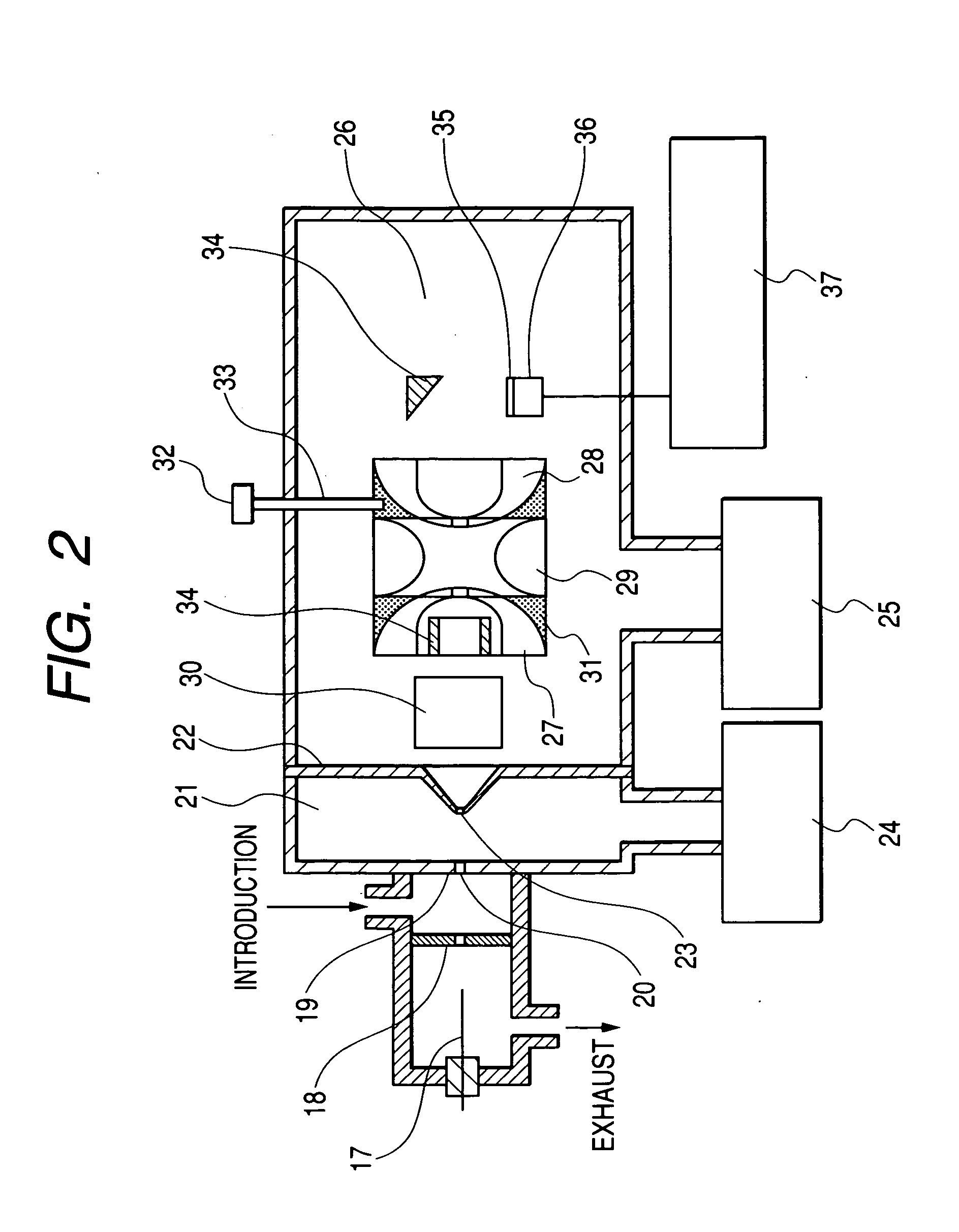Apparatus for detecting chemical substances and method therefor
- Summary
- Abstract
- Description
- Claims
- Application Information
AI Technical Summary
Benefits of technology
Problems solved by technology
Method used
Image
Examples
embodiment 1
[0059] [Embodiment 1]
[0060]FIG. 1 is a diagram showing an example of an explosive detection system according to Embodiment 1 of the present invention. An apparatus for detecting chemical substances according to Embodiment 1 employs a wipe method using an organic acid gas generator.
[0061] As shown in FIG. 1, the apparatus has a heating unit 2 having an absorption region 1 (upper heater) and a lower heater, an organic acid gas generator 3, an ion source 4, a mass analysis region 5, and a data processor 6. Lactic acid of about 400 μL (microliter) as an example of an organic acid is put into the organic acid gas generator 3 and is heated to about 40° C. by a generator heater 9 for generating lactic acid vapor. It is introduced into the ion source 4 at a flow rate of about 0.1L (liter) / min by a pushing pump 7 and a pushing flow controller 8. The pushing flow rate may be a flow rate not reversely flowing to the introduction region 1 side.
[0062] To introduce the vapor or fine particles f...
embodiment 2
[0092] [Embodiment 2]
[0093] In Embodiment 2, an explosive detection system which performs tandem mass analysis on ions originating from an adduct of an explosive and lactic acid to detect specific dissociated fragment ions, will be described.
[0094] Tandem mass analysis method is known as a method for enhancing selectivity in a mass spectrometer. As examples of units applying the tandem mass analysis method are a triple quadrupole mass spectrometer and a quadrupole ion trap mass spectrometer. In the tandem analysis method, mass analysis is performed in two stages. As the first stage of mass analysis, the m / z of ions generated by the ion source is measured. An ion with specific m / z is selected from ions with various m / z.
[0095] The selected ion (precursor ion) is dissociated by collision with a neutral gas to generate a fragment ion. As the second stage of mass analysis, mass analysis of the fragment ion is performed. When the precursor ion is dissociated, the part of the molecule wh...
embodiment 3
[0103] [Embodiment 3]
[0104] In Embodiment 3, an explosive detection system will be described in which an ion generated from an explosive and an ion obtained by adding a molecule generated from lactic acid to an explosive are subjected to tandem mass analysis simultaneously for dissociation and fragmentation, and a fragment ion of the explosive or a fragment ion of the molecule generated from lactic acid is detected.
[0105] In typical tandem mass analysis, one precursor ion is analyzed. In Embodiment 3, tandem mass analysis is performed on two or more precursor ions simultaneously. Ions generated from the explosive are detected as a plurality of ion peaks. Similarly, a plurality of ion peaks obtained by adding a molecule generated from lactic acid to the explosive may be detected. Some of these numerous ion peaks are selected as precursor ions for dissociation. In this method, the ion generated from the explosive and the lactic acid adduct ion may generate the same fragment ions. In ...
PUM
 Login to View More
Login to View More Abstract
Description
Claims
Application Information
 Login to View More
Login to View More - R&D
- Intellectual Property
- Life Sciences
- Materials
- Tech Scout
- Unparalleled Data Quality
- Higher Quality Content
- 60% Fewer Hallucinations
Browse by: Latest US Patents, China's latest patents, Technical Efficacy Thesaurus, Application Domain, Technology Topic, Popular Technical Reports.
© 2025 PatSnap. All rights reserved.Legal|Privacy policy|Modern Slavery Act Transparency Statement|Sitemap|About US| Contact US: help@patsnap.com



